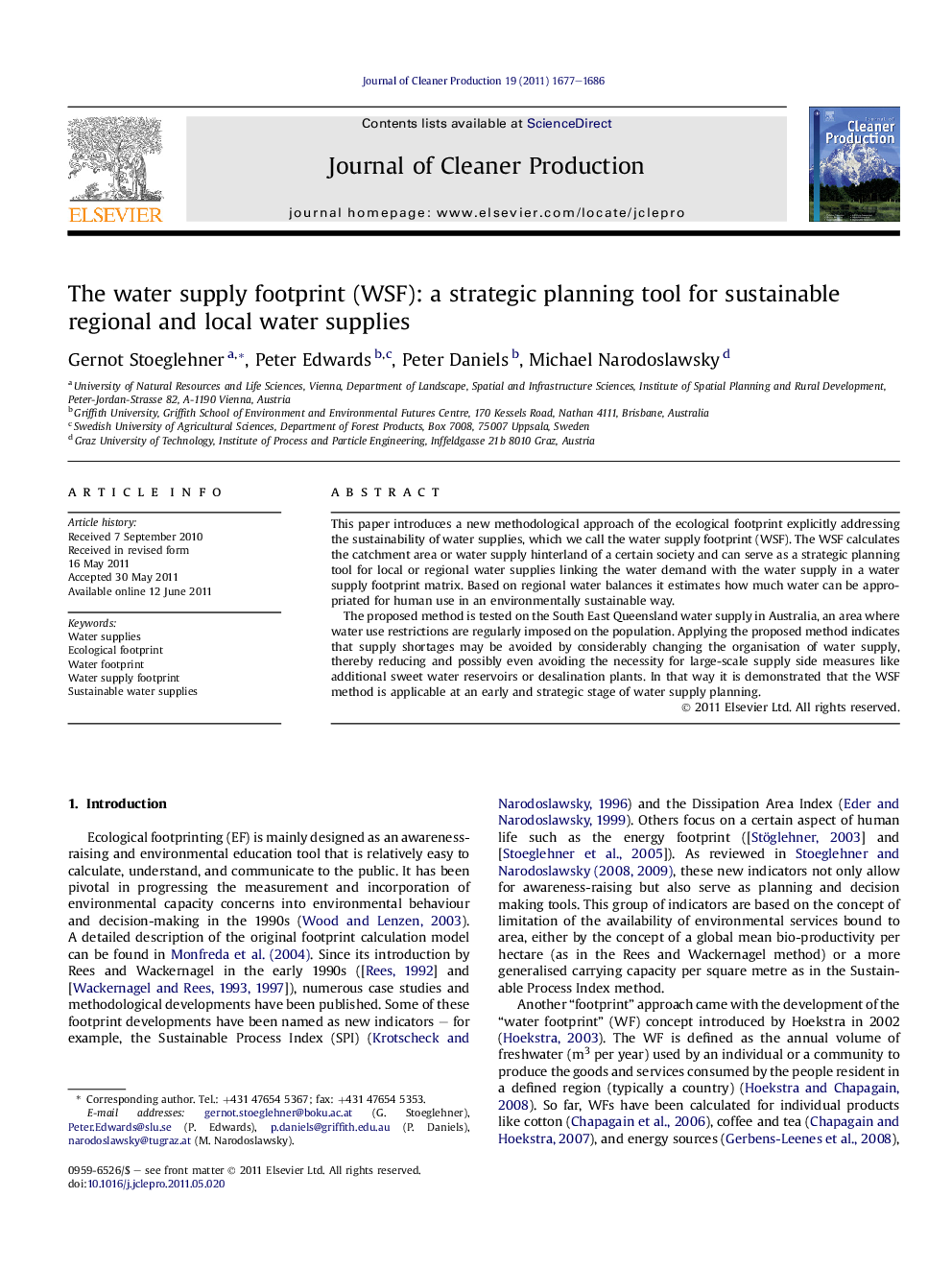| Article ID | Journal | Published Year | Pages | File Type |
|---|---|---|---|---|
| 1746141 | Journal of Cleaner Production | 2011 | 10 Pages |
This paper introduces a new methodological approach of the ecological footprint explicitly addressing the sustainability of water supplies, which we call the water supply footprint (WSF). The WSF calculates the catchment area or water supply hinterland of a certain society and can serve as a strategic planning tool for local or regional water supplies linking the water demand with the water supply in a water supply footprint matrix. Based on regional water balances it estimates how much water can be appropriated for human use in an environmentally sustainable way.The proposed method is tested on the South East Queensland water supply in Australia, an area where water use restrictions are regularly imposed on the population. Applying the proposed method indicates that supply shortages may be avoided by considerably changing the organisation of water supply, thereby reducing and possibly even avoiding the necessity for large-scale supply side measures like additional sweet water reservoirs or desalination plants. In that way it is demonstrated that the WSF method is applicable at an early and strategic stage of water supply planning.
